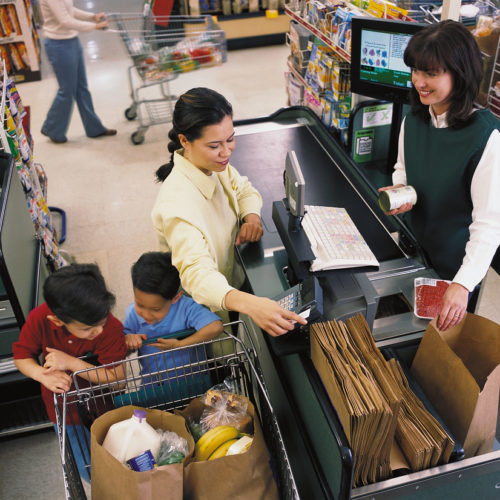EBT Acceptance at Farmers Markets Needs States’ Support

The following press release from Food Nutrition Service of the USDA describes the current status of the funding for wireless EBT options for farmers markets. The agency strongly urge states to comply with the law that requires no-cost options for farmers markets and certain other retailers to accept SNAP.
WASHINGTON — In response to the recent news about access to farmers markets for participants in the Supplemental Nutrition Assistance Program (SNAP), Food and Nutrition Service Administrator Brandon Lipps offers the following statement:
“The Food and Nutrition Service (FNS) was recently informed by a major provider of mobile EBT technology for farmers markets and farm stands that it will discontinue this service. With few providers in this marketplace, this is of great concern.
Farmers markets play an important role in providing Americans with access to nutritious foods. FNS is committed to encouraging farmers market participation in SNAP, to improve access for low income Americans while supporting economic opportunities for farmers and producers.
Since being notified of the provider’s decision to discontinue service, USDA has been exploring all available options in an attempt to avoid a service disruption. Our number one goal is to mitigate the impact on our program participants as well as farmers and producers.”
Here are some facts you should know about SNAP and farmers markets:
- By law, states are required to provide no-cost options for farmers markets and certain other retailers to accept SNAP. USDA reimburses states for 50 percent of these costs, like most other administrative expenses. The law does not require those solutions to be wireless, but FNS strongly encourages states to support wireless options.
- If state options are not feasible for a particular market, impacted markets and farmers may opt to seek their own wireless point-of-sale equipment or accept payment from SNAP participants by using paper vouchers.
- Recognizing that using traditional wired systems can be challenging for farmers markets and farm stands, Congress has approved $4 million each year in the President’s annual budget requests to allow USDA to provide EBT equipment to eligible markets and farmers.
- When the funding became available in 2012, FNS provided the funding to states as grants to provide wireless EBT equipment to eligible markets and farmers, but found that states were not using the funding, though it was available for up to 5 years.
- Because of lack of interest from the states, FNS opted to provide wireless equipment grants directly to markets and farmers beginning in 2013. The grant funding does not cover long-term costs of operating the mobile equipment or subsidize the service provider. The grant funding is sufficient to cover start-up costs for markets and farmers who are not currently accepting SNAP, so that they can expand their customer base to a level that will support the ongoing business costs associated with mobile transactions.
- Throughout the program, FNS has worked with three different contractors; the National Association of Farmers’ Market Nutrition Programs (also known as MarketLink), the Farmers Market Coalition (FMC), and most recently, Financial Transaction Management (FTM). All three contracts were awarded through an open, competitive process that complied with federal contracting law, and the companies were chosen because they were both technically acceptable and the best value. The most recent contract was awarded to FTM in March, and they are required to begin processing applications for wireless equipment from new markets and farmers this month.
- FNS will continue to work with FTM to ensure that markets and farmers have access to this important program. Like previous contracts, it is intended to help new markets get equipment and begin processing SNAP transactions – not serve as a permanent support. FTM has no role in supporting those markets equipped under previous contracts.
Moving forward, FNS will continue to work with interested mobile payments providers, while seeking to modernize the approach by employing a bring-your-own-device model for accepting SNAP EBT transactions, Food Insecurity Nutrition Incentive (FINI), and electronic payments from the Special Supplemental Nutrition Program for Women, Infants and Children (eWIC). Under this approach, business operators would purchase their own-point-of sale-equipment such as mobile phones and/or transaction terminals.
USDA is committed to providing excellent customer service to all of our diverse stakeholders, including those who operate our programs and those whom our programs serve. Our partners include program participants, state agencies, local operators, Congress, national and regional partners, local leaders and elected officials, retailers, and the American taxpayer. Together, we must ensure that our programs serve participants well.
USDA’s Food and Nutrition Service administers 15 nutrition assistance programs. In addition to the Supplemental Nutrition Assistance Program, these programs include Special Supplemental Nutrition Program for Women, Infants and Children, the National School Lunch Program, and the Summer Food Service Program which together comprise America’s nutrition safety net. For more information, visit www.fns.usda.gov.
–USDA FNS

